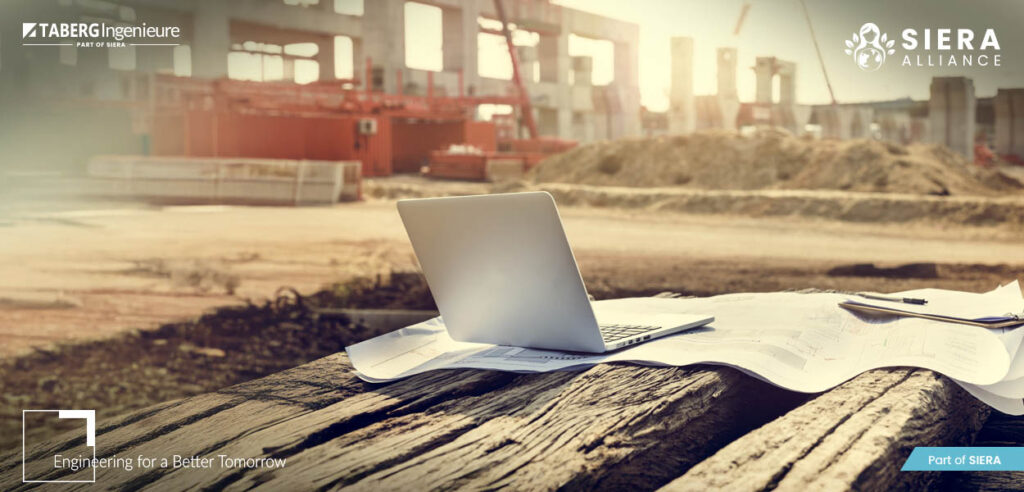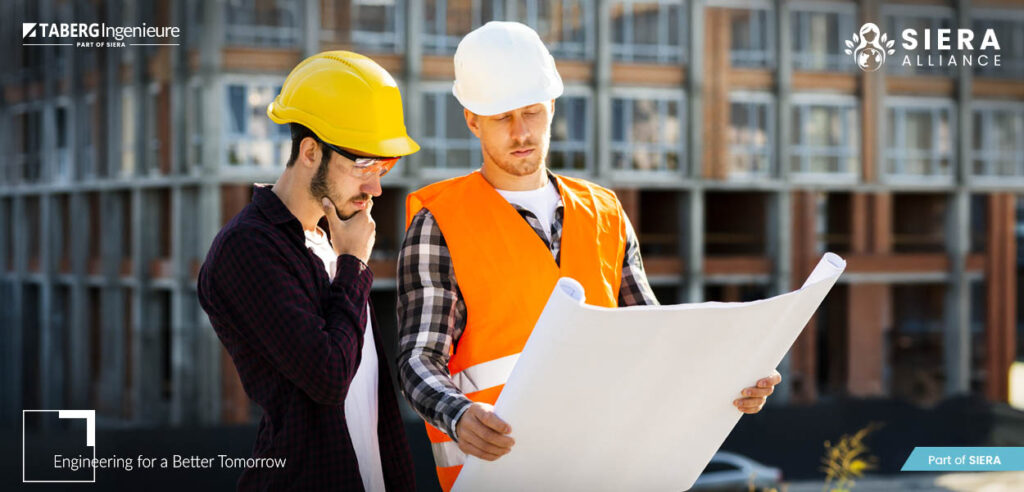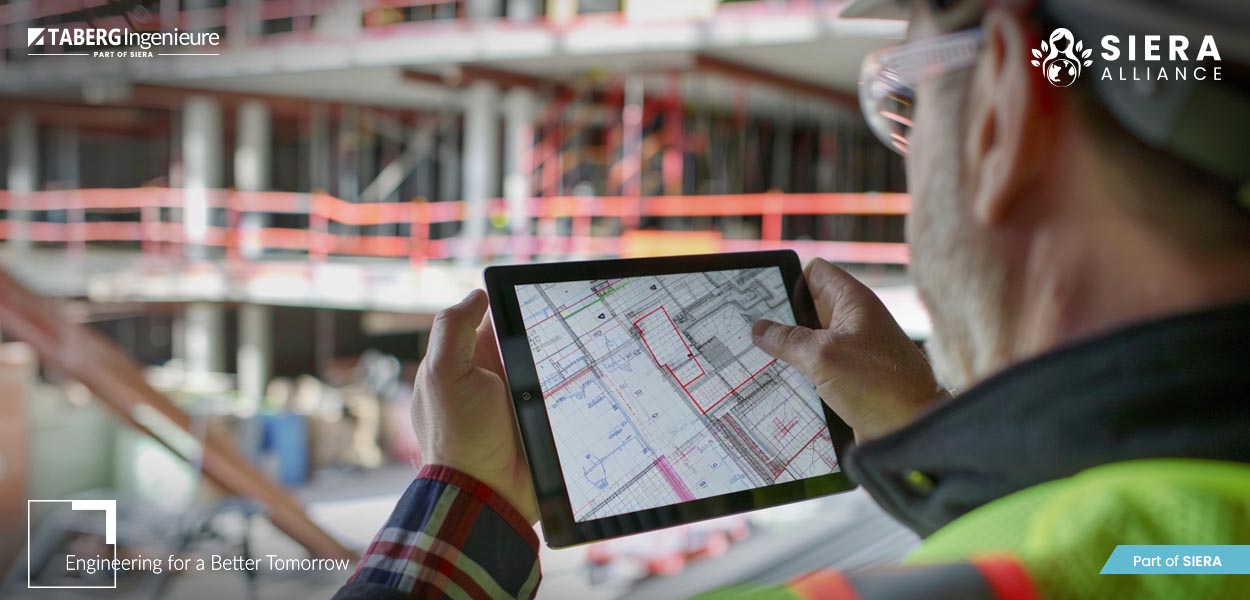Construction projects are complex endeavors that feature countless moving parts. From unstable soils and environmental disruptions to compliance pitfalls and community resistance, risks can surface at any stage of the project lifecycle and threaten operational success. That is, unless a construction risk assessment has been undertaken.
A construction project risk assessment is a critical process that enables project teams to anticipate potential issues, make informed decisions and prepare contingencies while delivering safe, sustainable and compliant structures.
With deep geoscientific and engineering expertise, TABERG Ingenieure GmbH — part of SIERA — offers comprehensive risk analysis, monitoring and mitigation strategies that enable smooth execution across construction, mining and infrastructure projects. This article explores the fundamentals of construction risk assessment, why it matters and how TABERG is leading the way in delivering reliable, evidence-backed assessments.
What is Construction Risk Assessment?
Construction site risk assessment is a systematic process used to identify, analyze and mange potential hazards that could negatively impact a construction project. These risks may involve worker safety, environmental degradation, structural failures, legal non-compliance or financial losses. In practice, a construction risk assessment allows teams to:
- Pinpoint vulnerabilities before breaking ground
- Quantify the likelihood and severity of each risk
- Develop strategies to eliminate, reduce or monitor those risks
- Maintain compliance with legal and environmental regulations
Common Risk Categories in Construction
Risk assessments consider a wide range of factors, including:
- Geotechnical Risks: Soil instability, landslides, underground cavities, groundwater shifts.
- Environmental Risks: Dust, vibration, noise pollution, contamination, biodiversity impacts.
- Structural Risks: Foundation settlement, cracks, load miscalculations.
- Regulatory Risks: Permitting delays, zoning violations, environmental protection laws.
- Occupational Health and Safety Risks: Hazards to workers from equipment, heights or materials.
- Social/Stakeholder Risks: Community complaints, public protests, damage claims from nearby properties.
Key Components of a Construction Risk Assessment
An effective risk assessment for construction sites typically includes the following components:
- Site Analysis and Baseline Surveying:Geotechnical and environmental evaluations to establish the physical and ecological context of the project.
- Hazard Identification: Mapping all potential risks, whether they are physical, chemical, legal, financial or social.
- Risk Identification: Risks are analyzed in terms of probability and impact, often employing a risk matrix.
- Control Measures: Development of mitigation strategies-ranging from design changes to environmental monitoring or stakeholder engagement.
- Documents and Reporting: All findings and decisions are formally documented to ensure transparency and compliance.
- Ongoing Monitoring and Adaptation: Long-term risks are tracked through sensor systems, site inspections and adaptive project planning.
Common Tools & Methods Used
Modern risk assessments leverage both, field expertise and advanced technology. Some commonly used tools include:
- Construction site inspection software for documentation and real-time data logging.
- Geodetic monitoring systems for measuring height, angle and structural movement.
- 3D fissurometers and electronic inclination sensors for crack monitoring.
- Noise, dust and vibration sensors to detect environmental impact.
- GIS mapping and spatial modeling to visualize risk zones.
- Environmental risk matrices to classify and prioritize hazards.
- Construction site inspection checklists to ensure no critical aspect is overlooked.
TABERG integrates these methods through precision instruments and multidisciplinary engineering teams.

Why Construction Risk Assessment is Crucial
Construction projects that overlook risk assessment face significant setbacks, including delays, budget overruns, safety incidents or legal disputes. Here’s why a robust risk management plan is essential:
- Prevents Costly Delays: Identifying hazards early prevents work stoppages or redesigns.
- Enhances Worker Safety: Ensures compliance with occupational safety standards and reduces workplace accidents.
- Improves Environmental Stewardship: Avoids irreversible damage and fulfills legal obligations.
- Supports Legal Compliance: Aligns with local and national building codes and environmental regulations.
- Protects Reputation: Demonstrates accountability and professionalism to investors, authorities and the public.
- Informs Better Decision-Making: Enables smarter planning and resource allocation.
- Reduces Liability: Provides documentation to defend against false claims or disputes.
In short, construction risk assessment is the foundation of responsible, efficient and legally secure project development.
How TABERG Ingenieure GmbH Supports Risk Assessment
With a reputation built on technical accuracy and comprehensive service delivery, TABERG Ingenieure GmbH is a trusted partner in construction project risk assessment. Our services span the entire project lifecycle, from early-stage due diligence to post-construction monitoring.
Core Capabilities:
- Preservation of Evidence Concepts
TABERG, part of SIERA, develops tailored concepts based on a forecast of impact areas and intensity — essential for protecting structures and mitigating legal risks.
- Site Condition Surveys & Documentation
Includes photographic and written protocols of all affected structures before, during and after construction.
- Environmental & Structural Monitoring
Precision measurement tools are used to assess height, position, angle, vibration, dust and noise levels. Long-term sensors allow for continuous real-time monitoring.
- Approval & Regulatory Navigation
Experts determine the appropriate legal frameworks (e.g., BBergG, BlmSchG, WHG) and coordinate with authorities throughout the application and permitting processes.
- Stakeholder Engagement & Conflict Management
TABERG supports public participation efforts and helps resolve disputes through transparent, dialogue-oriented strategies.
- Remediation & Post-Operation Support
Includes mass calculations, dismantling strategies, recultivation planning and expert valuations for recultivation obligations.
- Environmental Due Diligence
Involves hazardous material analysis, renovation planning and environmental risk prevention.
Sectors Served:
TABERG’s risk assessments support a wide range of industries, including:
- Construction & Infrastructure
- Mining & Raw Materials
- Transportation Projects
- Public Infrastructure & Municipal Services
- Industrial Developments
By combining engineering insight with regulatory know-how, TABERG ensures that every project is built on a foundation of risk awareness and operational excellence.

Turn Risk into Resilience with TABERG
In today’s construction landscape, complexity is the norm and uncertainty is inevitable. But with the right tools, knowledge and partners, like TABERG and SIERA Alliance, risks can be transformed into opportunities for better design, stronger compliance and more resilient outcomes.
Need support with your next construction project? Contact TABERG today for expert risk assessment solutions.
FAQs
1. What is a construction site risk assessment?
It’s a systematic review conducted before and during construction to identify and manage risks related to safety, structure, environment and compliance. It helps prevent delays, legal issues and environmental damage.
2. What is an environmental risk assessment for construction projects?
It’s the process of evaluating environmental impacts — such as pollution, biodiversity loss or soil degradation — and proposing mitigation strategies. TABERG offers full-service environmental due diligence and remediation planning.
3. What are the legal requirements for construction risk assessment in Germany?
In Germany, Risk assessments are mandated by various regulations such as the Construction Site Ordinance (BaustellV), the Federal Immission Control Act (BlmSchG) and the Water Resources Act (WHG). Compliance with these frameworks requires environmental assessments, structural documentation and public engagement.
4. What is the risk assessment method in construction?
The standard method involves hazard identification, risk evaluation (likelihood vs. severity), control planning, implementation and ongoing monitoring. Tools like inspection software, GIS and sensor-based systems support this process.
5. Who is responsible for construction risk assessment?
Project developers and contractors bear the primary responsibility, often supported by specialized engineering firms like TABERG who provide technical expertise and legal documentation.

